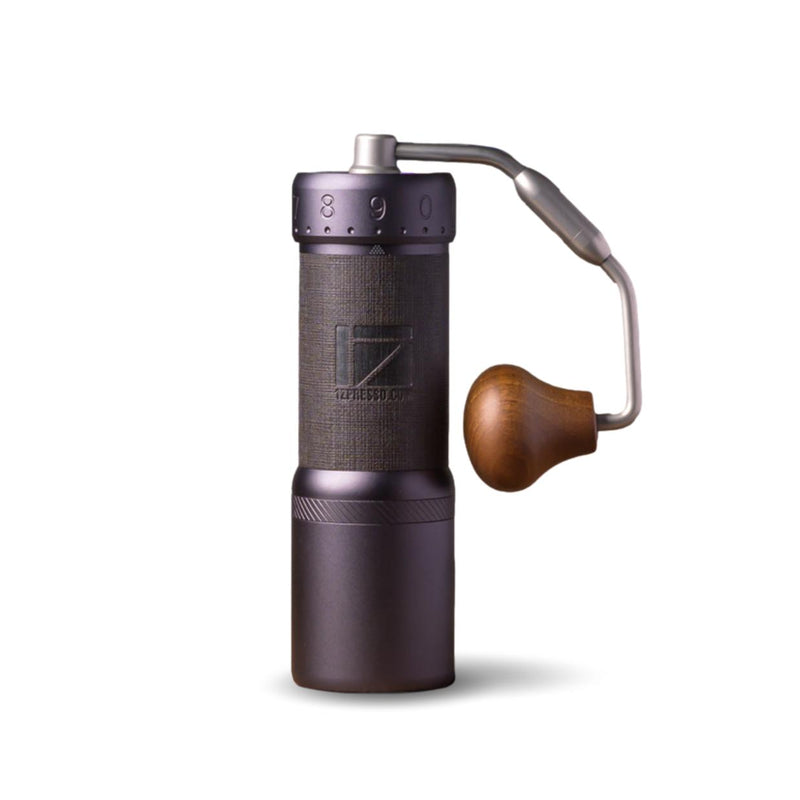Master the Art of Grinding Coffee Beans: A Guide to Coffee Grinders
For coffee fanatics, the procedure of grinding coffee beans is more than just a regular job; it is an art form that can substantially influence the flavor and top quality of the final brew. Coffee grinders play an important function in this fragile process, yet understanding their usage involves even more than simply pushing a switch. Comprehending the subtleties of different grinder kinds, selecting the proper grind size, and using the right techniques are essential steps in the direction of achieving that excellent cup of coffee. The trip towards ending up being a coffee grinding master doesn't end there. As we discover the intricacies of this craft, we will certainly discover upkeep keys, fixing tips, and a lot more, all focused on boosting your coffee experience to new heights.
Types of Coffee Grinders
There are 3 key kinds of coffee mills frequently used by coffee enthusiasts: blade grinders, burr mills, and manual mills. Blade mills are one of the most basic kind, making use of a straightforward blade to chop the coffee beans. While they are affordable and simple to utilize, they usually lead to unequal coffee premises because of irregular grinding. Burr mills, on the various other hand, offer even more accuracy by crushing the beans in between a relocating grinding wheel and a non-moving surface. This leads to an uniform work dimension, which is crucial for a consistent coffee taste. Burr grinders are available in both flat and conical shapes, each offering a little different grinding characteristics.
Manual grinders, as the name recommends, call for hands-on initiative to grind the coffee beans. Each type of coffee mill has its advantages and perfect use situations, catering to the varied preferences of coffee enthusiasts.

Choosing the Right Work Dimension
With an understanding of the various sorts of coffee mills, the following vital step in achieving the best mug of coffee is choosing the best work dimension. The work dimension plays a considerable function in figuring out the taste account of your coffee (1Zpresso J-Max). Various developing approaches need particular grind sizes to enhance the extraction of tastes from the coffee premises
For a coarse grind, perfect for French press and cool brew approaches, the coffee beans ought to appear like breadcrumbs, offering a durable and strong taste. Medium-coarse grinds, ideal for Chemex or Clever Dripper, have a texture similar to crude sand, using a well balanced preference.
Tool grinds, typically made use of in drip coffee machine, have a consistency appearing like regular sand, causing an all-around flavor. Fine grinds, finest for coffee equipments, are comparable to common salt, generating a rich and intense taste. Ultimately, extra-fine grinds, utilized in Turkish coffee, are as fine as powdered sugar and create a solid and powerful mixture.
Grinding Techniques for Optimal Flavor
To draw out the fullest go to the website potential of taste from your coffee beans, understanding proper grinding methods is crucial. Consistency is essential when it comes to grinding coffee beans for optimal taste. By paying attention to these grinding methods, you can raise the taste account of your coffee and enjoy an extra enjoyable cup every time.
Upkeep and Cleaning Up Tips

Along with routine cleansing, it is critical to examine your mill for any kind of indications of wear or damages. Check the blades, burrs, and various other parts for any dullness or breakdowns. Change any damaged components immediately to maintain the quality of your coffee work. Last but not least, shop your grinder in a completely dry and clean setting to avoid any moisture or dust from affecting its performance. By following these upkeep and cleaning suggestions, you can make sure that your coffee mill remains to supply delicious freshly ground coffee for many years to come.
Troubleshooting Common Mill Issues


Ensuring your coffee grinder works smoothly calls for proficient visit site troubleshooting of common concerns that may emerge throughout its usage. One typical problem with coffee grinders is irregular work size. This problem can take place as a result of boring blades, inappropriate calibration, or unequal coffee beans. To address this, ensure your grinder's blades are sharp and appropriately lined up, adjust the mill according to the desired grind dimension, and shake the mill carefully while being used to help accomplish a more consistent work.
This can take place when oils from the coffee beans build up and obstruct the grinder's chute. To fix this, take apart the grinder and clean all components extensively, paying unique interest to the chute get redirected here and burrs.
Lastly, if your grinder is creating too much noise during procedure, it could suggest an issue with the electric motor or interior components. In such situations, it is advisable to seek advice from the maker's instructions for fixing steps or seek specialist support to diagnose and correct the concern immediately.
Verdict
In verdict, grasping the art of grinding coffee beans involves understanding the different sorts of coffee grinders, picking the ideal work dimension, using proper grinding strategies for optimum flavor, and maintaining and cleansing the mill routinely. By following these standards and troubleshooting usual grinder concerns, coffee enthusiasts can elevate their coffee brewing experience and appreciate a scrumptious mug of coffee each time.